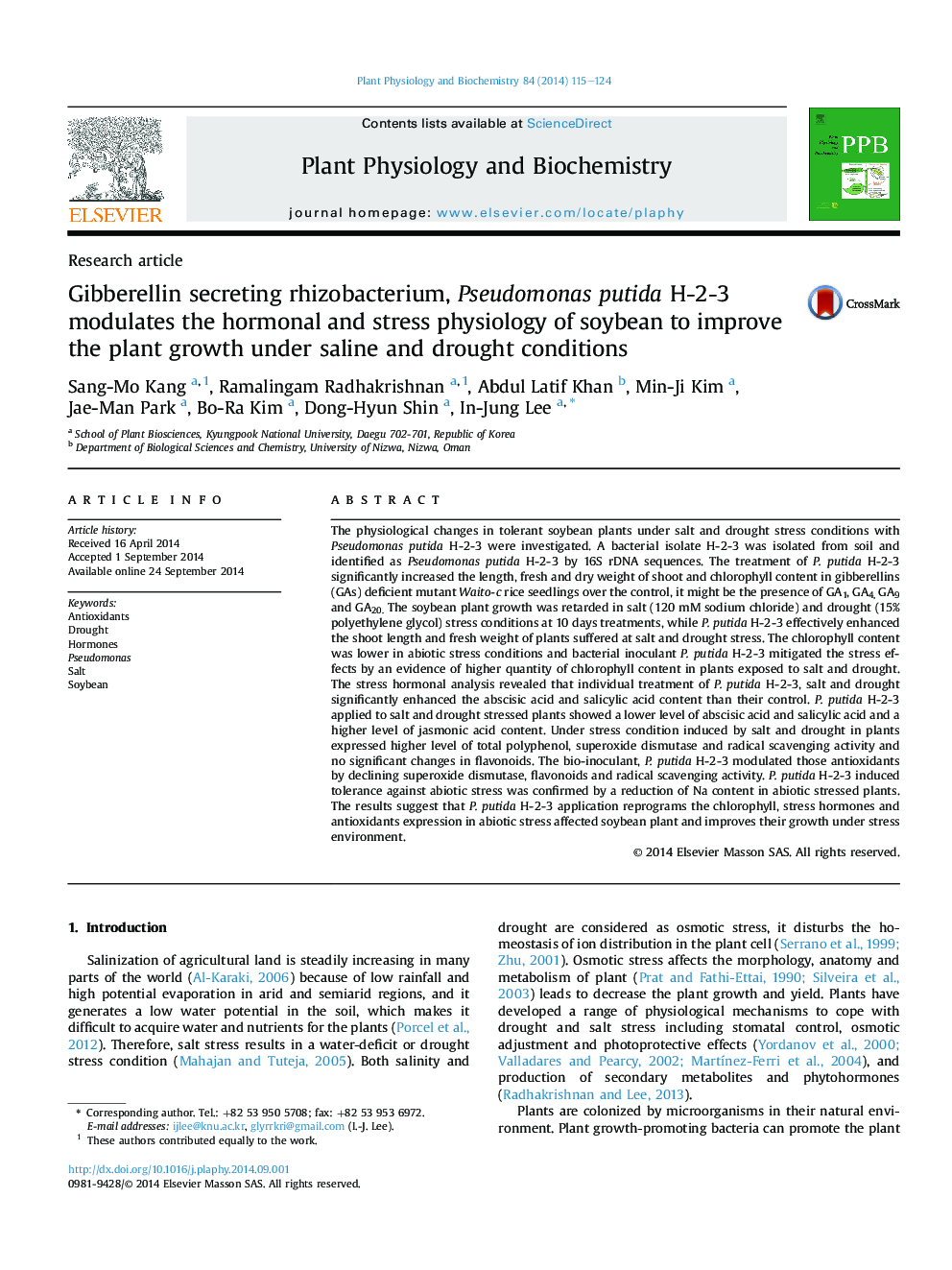| کد مقاله | کد نشریه | سال انتشار | مقاله انگلیسی | نسخه تمام متن |
|---|---|---|---|---|
| 2015663 | 1541937 | 2014 | 10 صفحه PDF | دانلود رایگان |

• Pseudomonas putida H-2-3 secreted GAs and improved soybean plant growth.
• It ameliorated the drought and salt stress effect in soybean.
• P. putida H-2-3 induced regulation of stress hormones and antioxidants in soybean plants.
• Application of P. putida H-2-3 could be an alternative for chemical fertilizers.
• It can increase the crop productivity in drought and salt affected agricultural lands.
The physiological changes in tolerant soybean plants under salt and drought stress conditions with Pseudomonas putida H-2-3 were investigated. A bacterial isolate H-2-3 was isolated from soil and identified as Pseudomonas putida H-2-3 by 16S rDNA sequences. The treatment of P. putida H-2-3 significantly increased the length, fresh and dry weight of shoot and chlorophyll content in gibberellins (GAs) deficient mutant Waito-c rice seedlings over the control, it might be the presence of GA1, GA4, GA9 and GA20. The soybean plant growth was retarded in salt (120 mM sodium chloride) and drought (15% polyethylene glycol) stress conditions at 10 days treatments, while P. putida H-2-3 effectively enhanced the shoot length and fresh weight of plants suffered at salt and drought stress. The chlorophyll content was lower in abiotic stress conditions and bacterial inoculant P. putida H-2-3 mitigated the stress effects by an evidence of higher quantity of chlorophyll content in plants exposed to salt and drought. The stress hormonal analysis revealed that individual treatment of P. putida H-2-3, salt and drought significantly enhanced the abscisic acid and salicylic acid content than their control. P. putida H-2-3 applied to salt and drought stressed plants showed a lower level of abscisic acid and salicylic acid and a higher level of jasmonic acid content. Under stress condition induced by salt and drought in plants expressed higher level of total polyphenol, superoxide dismutase and radical scavenging activity and no significant changes in flavonoids. The bio-inoculant, P. putida H-2-3 modulated those antioxidants by declining superoxide dismutase, flavonoids and radical scavenging activity. P. putida H-2-3 induced tolerance against abiotic stress was confirmed by a reduction of Na content in abiotic stressed plants. The results suggest that P. putida H-2-3 application reprograms the chlorophyll, stress hormones and antioxidants expression in abiotic stress affected soybean plant and improves their growth under stress environment.
Journal: Plant Physiology and Biochemistry - Volume 84, November 2014, Pages 115–124